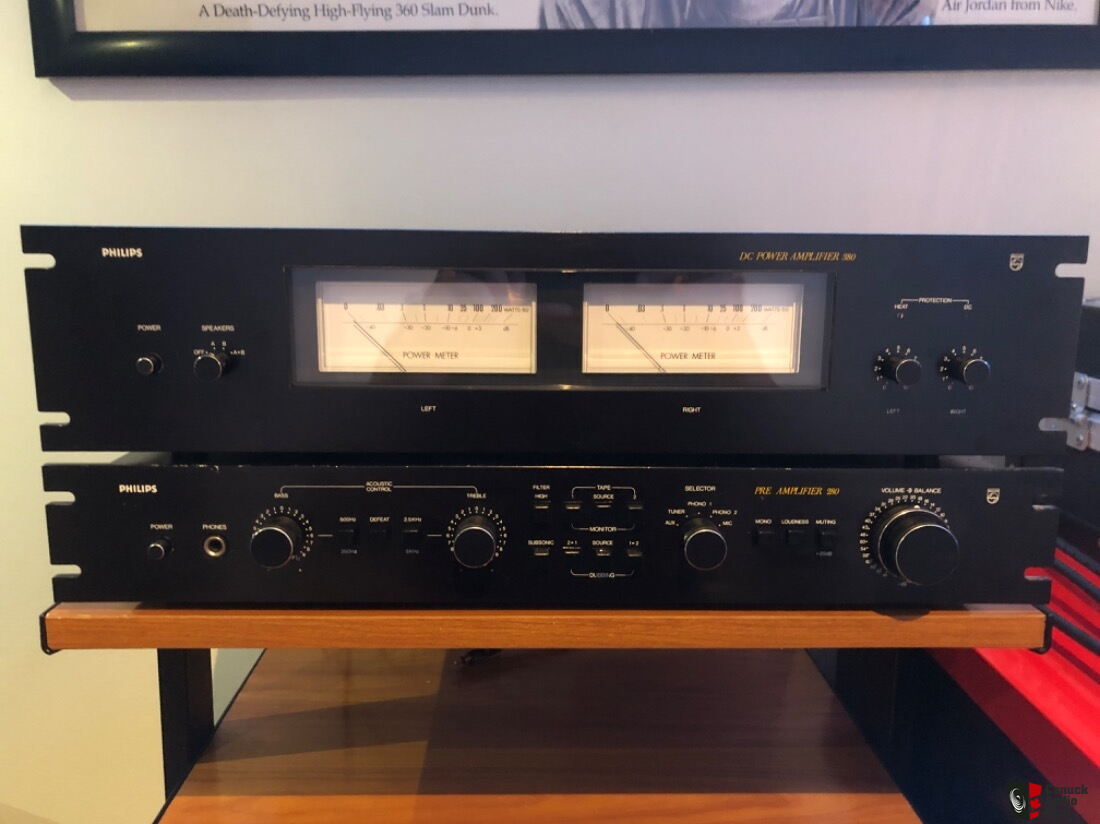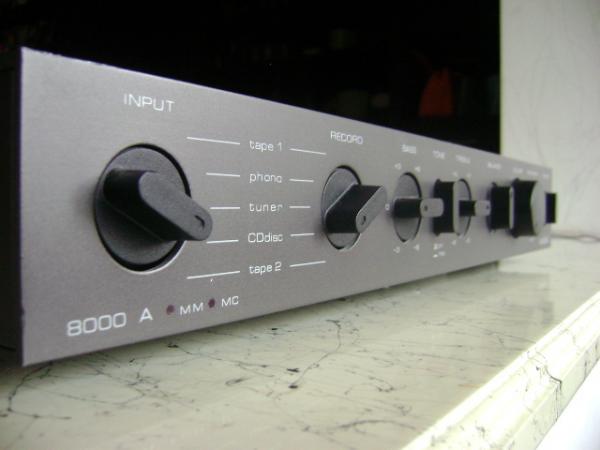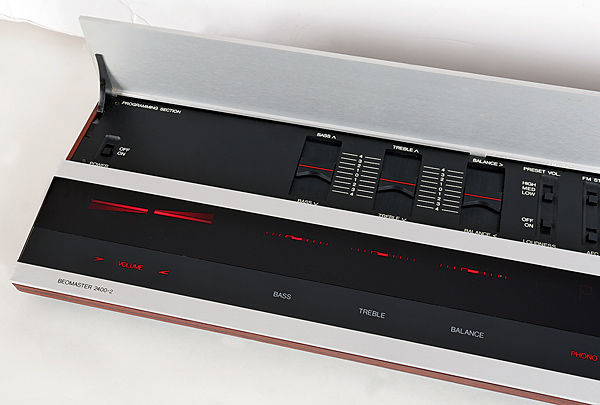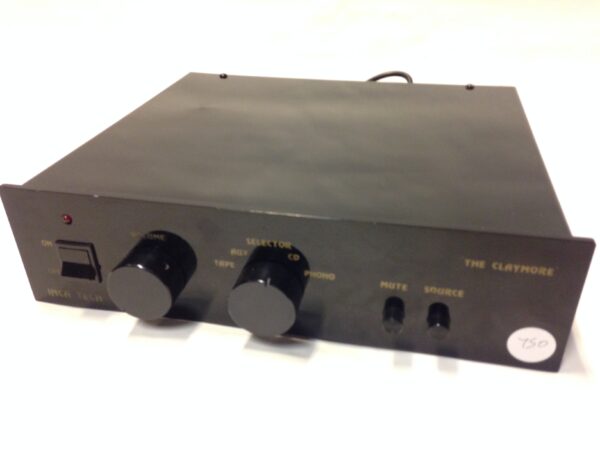Tim de Paravicini, a bright former Lux designer who had previously worked with Antony at Michaelson and Austin, was the logical choice when Antony Michaelson needed his first Musical Fidelity integrated amplifier. Tim told me that the A1 started out as “a breadboard that I created for myself” in order to “replicate in transistors the same features and sound of valves.” “I talked it over with Antony Michaelson, and he decided to go forward with it.” I established the basic measurements and heatsink technologies, which resulted in the peculiar waffle toaster shape.”
Indeed, as any A1 owner knows, the latter went on to define the project. It was always going to, being a complete Class A design with a continuous power usage of 80W; there’s a lot of heat to disperse in a relatively tiny space. Tim picked 20W RMS per channel as a “manageable product in an acceptable size to run below 65 degrees centigrade,” according to Tim. Pentagram, Antony’s industrial design firm, was tasked with dissipating all of this heat. “He paid them a lot of money, but he got a really fantastic visual impact on the basic concept,” Tim added.
Tim de Paravicini suggested that the Musical Fidelity A1 be skewed in full Class A. From the front end to the loudspeaker terminals, it used self-biasing and complementary output devices in a symmetrical, push pull design. The biassing was set up so that the output could only operate at a constant power draw. Discrete op-amp designs were used for the line and phono amp circuitry. Paravicini says he utilized low-cost 2N3055 and 2N2955 transistors “to show a point,” and he’s proud of this “very simple and unconventional” design.
In that unusual casing, the innards are a snug fit. Four 10,000uF reservoir capacitors are powered by a 160VA toroidal transformer, which takes up some room. There’s little else to say besides an ALPS volume potentiometer, a source selector, power switch, tape monitor button, and a rear panel-mounted MM/MC selector. When you glance inside, you’ll question why the amplifier’s housing wasn’t vented in the first place. It blocks any true airflow, leaving the great heatsinking on the ragged edge to bake the components inside! The main aim of the A1 was that it was affordable esoterica – that is, Tim de Paravicini set out to develop something that sounded unique but didn’t necessitate the use of unusual and expensive components.
The Musical Fidelity was created with the goal of hitting the £200 price point, and it did so using ingenious yet basic thinking that was unlike anything you’d find in a transistor textbook. The eye-catching aluminium casework adds a touch of visual exoticism to the already unique interiors. Although it is clearly a 1980s amplifier, it appears significantly less antiquated than almost all of its contemporaries, and it was beautiful then as it is now. This is the greatest sounding mid-price integrated amplifier of its time, in my opinion. Having heard and/or owned all of its contemporaries, the Naim NAIT, Exposure X, Myst TMA3, Inca Tech Claymore, and Onix OA21 all offer a level of magic that the Naim NAIT, Exposure X, Myst TMA3, Inca Tech Claymore, and Onix OA21 simply don’t. It’s a remarkable feat for a £200 amplifier in 1984; even when compared to a modern, top-of-the-line mid-price integrated like the Exposure 3010S2 (£1,500), it demonstrates its audacious quality.
This isn’t to imply that the A1 is without flaws; it isn’t. It’s a challenging amplifier to use, and even more difficult to get properly, whereas most of its competitors are far less picky. You keep returning to two things: heat and power, with too much of one and not enough of the other. The amp requires loudspeakers that are at least 90dB efficient. Anything lower than that, and you’ll hear it wheezing and groaning under the pressure of moving the awful box’s drive units, which isn’t the A1’s strong suit.
You obtain a sublimely pleasant sound when everything is properly matched and placed in a well aired space with nothing on top except cool air (everything else is likely to melt). It’s not like a Sugden-style Class A, which is bright and seeking tonally; rather, it’s more like a really nice valve amplifier, if I may say so. The A1 isn’t like that at all. Really awful valve amplifiers are syrupy and gloopy, excessively colored and opaque, whereas the A1 isn’t. Tonally, it’s smart, polished, and sparkly, but it doesn’t obscure the music or limit it to a single romantic sound. A slight, subtle sepia tint is always noticeable, but it is never obtrusive and contributes to rather than detracts from the proceedings.
Still, the A1 isn’t just a pleasant, unobtrusive product. There are a lot of them, and a lot of them are quite boring – the polar opposite of Musical Fidelity. Instead, it’s incredibly quick and agile, as well as incredibly expressive and lucid. In a world where so many amplifiers sound like accountants chatting in German, it has all the pleasure and romanticism of finely spoken Italian. It does have its own ‘magic dust,’ in that whatever music you play seems to have an emotional message to be hammered home, rather than just a collection of sounds to be picked apart. The A1 is an aphrodisiac if music is the food of love.
It’s fantastic for microdynamics, but not so much for all-out booming crescendos. The bass is rich and full, but it lacks the startling attack transients of a truly excellent solid-state Class AB design. The imaging is adequate but not spectacular. Instead, the listener’s attention is repeatedly drawn back to the emotion contained inside that complicated collection of musical notes. It is extraordinary in this regard, but only ‘solid’ in many others — its frequency extremes are hazy, but it is this most enticing and beautiful sweet spot everywhere else.
It is completely possible to live with a Musical Fidelity A1 today, but you must first ensure that it is operational and up to standard. This is the most likely of all the thirty-year-old British amplifiers to require service. Musical Fidelity no longer offers this service, although certain professionals, such as Amp Repair Services, are eager to assist. The fundamental issue is that the amp acts as a slow cooker for all of the electronics inside; electrolytic capacitors are the first to fail and should be changed if they haven’t already.
Heat difficulties have tarnished the amplifier’s reputation for dependability, and Tim de Paravicini believes cost-cutting was a factor. “I had given down thermal standards, but the circuit’s reliability was really high,” he said. “However, the product was let down by trying to cut costs, and certain cheap parts created some problems.” The second step is to make sure you’re using a nice, efficient set of loudspeakers; ironically, this is easier to do now than it was when the A1 was initially released. The trouble was that efficient loudspeakers were about as fashionable as a mid-seventies supergroup in the 1980s. Most audiophiles aspired to huge, butch (Class AB) transistor amplifiers and tiny power-sucking mini-monitors by this time (Acoustic Energy AE-1s et al.) The A1 was not of that caliber, and many reviewers dismissed it as being too niche. Ironically, they were probably true at the time, but the globe has now gravitated towards the A1, rather than away from it.
On the internet, there’s a burgeoning A1 culture, with several forums debating the advantages of altering it, but Tim de Paravicini isn’t impressed. “Because of their lack of actual information, tweakers will always do what they want.” They simply believe anything they read on the internet. People who believe they know more than I do irritate me. No one would have bought it if I had spent all this money on parts for the A1 and it had ended up costing £1,000! I give it my all at the time and stand by what I’ve accomplished. Smart is defined as “doing something better than everyone else, regardless of how fancy a component is…”
The A1 was a huge hit during its time on the market, selling approximately 200,000 units before being phased out in the early 1990s. The amp underwent a few modest incremental changes to increase reliability, including the inclusion of new components here and there and, of course, the later cases being vented to promote cooling. It’s now considered a cult amplifier in Japan, with audiophiles frequently purchasing two and using one for components to keep the other running! Expect to pay between £150 and £300 in the UK, depending on condition; this is a one-of-a-kind audiophile deal. “It still stands the test of time,” says Tim de Paravicini, “and I would be pleased to put it on the market now with very little change.”








